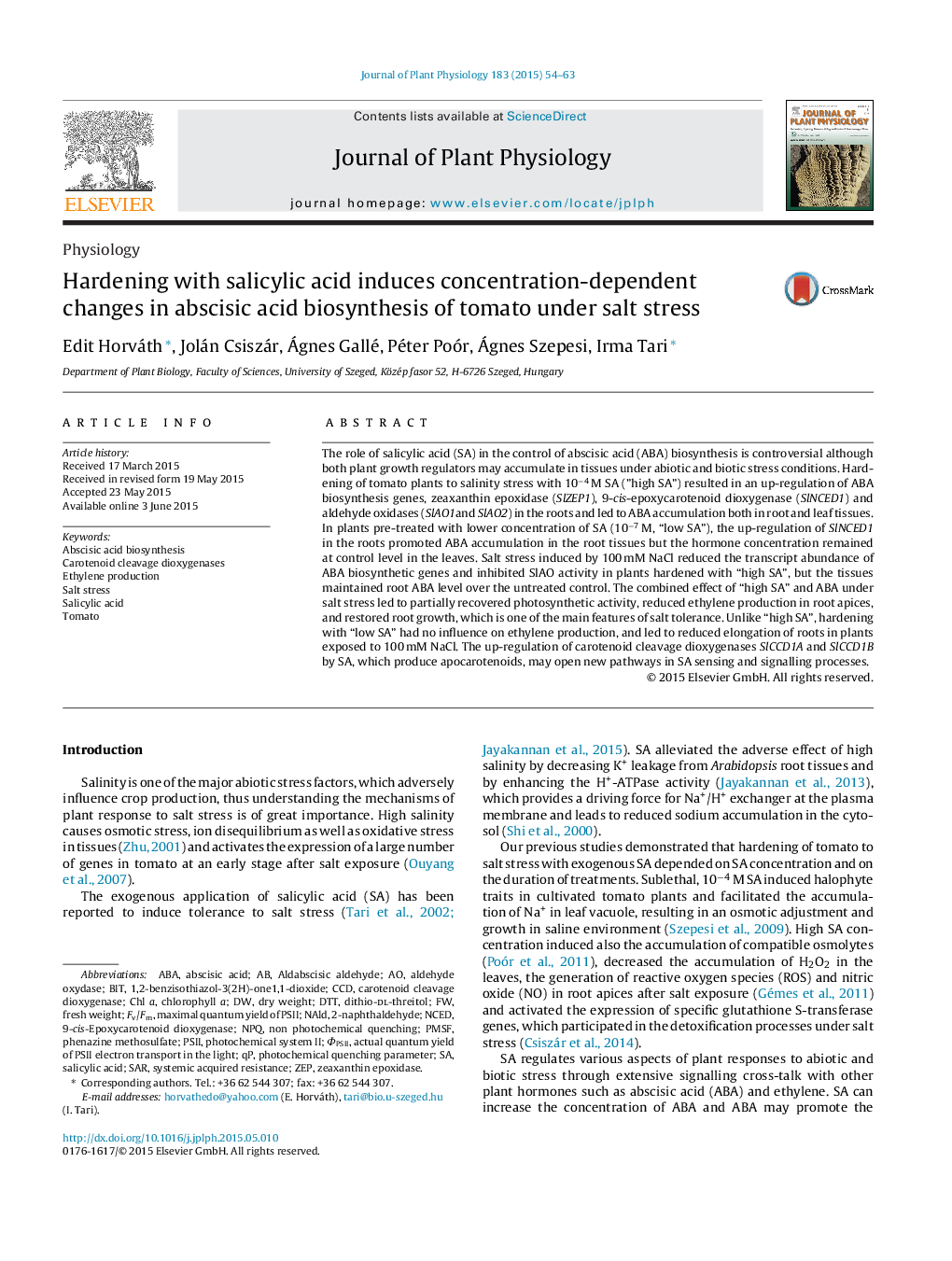| Article ID | Journal | Published Year | Pages | File Type |
|---|---|---|---|---|
| 8387388 | Journal of Plant Physiology | 2015 | 10 Pages |
Abstract
The role of salicylic acid (SA) in the control of abscisic acid (ABA) biosynthesis is controversial although both plant growth regulators may accumulate in tissues under abiotic and biotic stress conditions. Hardening of tomato plants to salinity stress with 10â4Â M SA (”high SA”) resulted in an up-regulation of ABA biosynthesis genes, zeaxanthin epoxidase (SlZEP1), 9-cis-epoxycarotenoid dioxygenase (SlNCED1) and aldehyde oxidases (SlAO1and SlAO2) in the roots and led to ABA accumulation both in root and leaf tissues. In plants pre-treated with lower concentration of SA (10â7Â M, “low SA”), the up-regulation of SlNCED1 in the roots promoted ABA accumulation in the root tissues but the hormone concentration remained at control level in the leaves. Salt stress induced by 100Â mM NaCl reduced the transcript abundance of ABA biosynthetic genes and inhibited SlAO activity in plants hardened with “high SA”, but the tissues maintained root ABA level over the untreated control. The combined effect of “high SA” and ABA under salt stress led to partially recovered photosynthetic activity, reduced ethylene production in root apices, and restored root growth, which is one of the main features of salt tolerance. Unlike “high SA”, hardening with “low SA” had no influence on ethylene production, and led to reduced elongation of roots in plants exposed to 100Â mM NaCl. The up-regulation of carotenoid cleavage dioxygenases SlCCD1A and SlCCD1B by SA, which produce apocarotenoids, may open new pathways in SA sensing and signalling processes.
Keywords
Related Topics
Life Sciences
Agricultural and Biological Sciences
Agronomy and Crop Science
Authors
Edit Horváth, Jolán Csiszár, Ágnes Gallé, Péter Poór, Ágnes Szepesi, Irma Tari,
